Classic Architectural Designs That Never Go Out of Style
Classic architectural designs that have stood the test of time come from different art periods and eras. They vary in structural forms and shapes, construction methods, size, regional character, and interior layouts.
From traditional coastal homes to log cabins, ranch-style residences, and Tuscan houses, their forms and unique architectural details remain popular among modern landowners and prospective homeowners.
Many traditional architectural styles possess a timeless elegance and a sense of mystery; perhaps this is one of the reasons why they are still desired by many today. Added to this is the aspect of history, perfect attention to detail, and the intricate architectural details found in these structures, features missing from contemporary architecture.

Popular Classic Architectural Designs and Home Styles
While some of these traditional structures are designs of the Old World (Europe and Asia), some are architectural styles of the New World (the Americas). Many of these classic designs were born from the Arts and Crafts Movement and structural designs that had their roots as far back as the earliest Cape Cod homes of the 15th century.
The ten top classic architectural designs and home styles (in no particular order) are:
- Cape Cod
- Waterfront
- Colonial
- Craftsman
- Georgian
- European
- Tuscan
- Mediterranean
- Contemporary (early 20th-Century)
- Ranch
Cape Cod Style
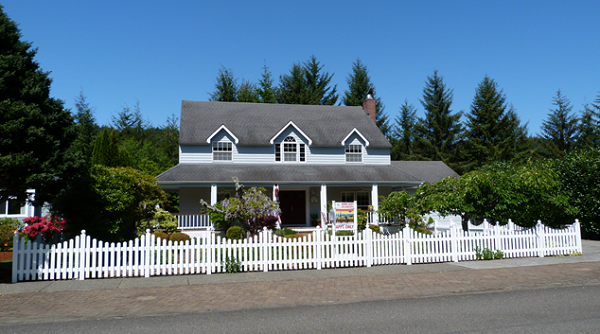
Cape Cod architectural styles became popular in the 1930s, but their roots date back to the 1600s. They were built small and often had dormer windows for illumination from natural light and for ventilation. Cape Cod homes are typified by two front windows installed on each side of the entrance door.
By the 1930s, Cape Cod homes typically came as one-storey buildings, although some did come as one-and-a-half-floor structures. They are closely related to Colonial architecture and are found mainly on the East Coast of America and the Southern region.
Features of Cape Cod Architectural Styles
- Symmetrical designs with steep rooflines.
- Gables on either side of the building.
- Multi-pane high windows that often extend to the roofline.
- Hardwood flooring.
- Small size with wood siding – a noticeable lack of exterior details.
- Dormers on the half floor to bring in light and create additional space.
- Small porch and entry.
- Some have painted pilasters and columns.
Today, modified and more attractive versions of Cape Cod houses are the answer to home-owning dreams.
Waterfront and Beach Homes
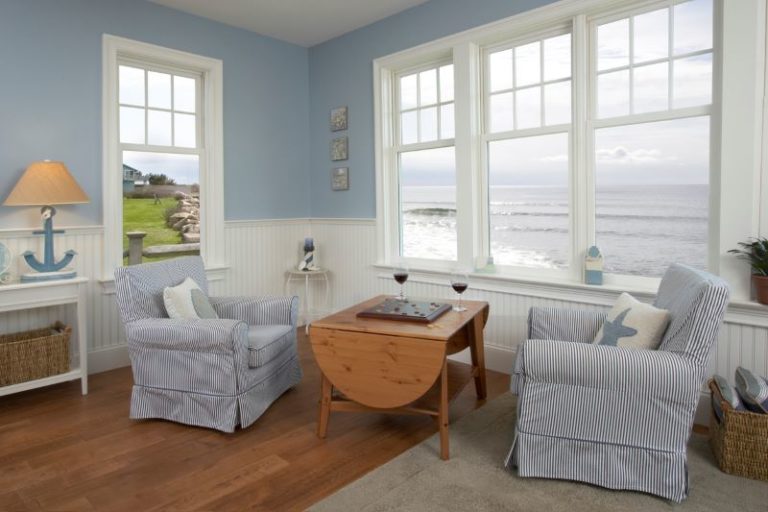
Also referred to as coastal homes, waterfront buildings are typified by beautiful and airy structures, with the main floor raised off the ground. This is a characteristic feature of houses built on shoreline sites.
Much of its charm is in the reflection it portrays – living a simple but exotic lifestyle. Waterfront houses are second homes and beach retreats to some and also serve as vacation homes where family and friends converge for the warm summer months.
Beach homes (coastal houses) depict summertime living, swimming, playing, entertaining, or simply lazing around the shores, enjoying the warm breeze by day and night. Their designs showcase the casual and free-spirited lifestyle of its occupants.
Architectural Features of Coastal Homes
- Wide porches, verandas, and sundecks.
- Outdoor entertainment spaces that face the waters.
- Designed with foundations that raise the main level above rising waves.
- Mainly constructed with glass and wood.
- Range from simple bungalows to multi-level vacation homes.
- The exterior wall facing the waters is nearly always filled with glass.
- Picture windows and sliding glass doors.
A popular style in coastal areas from Cape Cod to Southern California, beach home interiors are open and breezy. They are homes where the furnishings are at peace with damp swimwear and sandy feet. Precious décor items like seashells, pebbles, fishing nets, and a gallery of pictures fit comfortably in the interior spaces.
Colonial Home Design
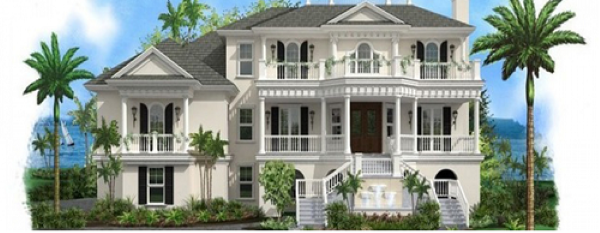
Many modern architects get their design inspiration from homes commonly found in the East Coast settlements of America. These were regions where the first colonial settlements and territories spread from the windy New England coastlines to the humid Georgia swamps.
Around the mid-1600s, American colonial homes were one-room structures with a lone fireplace which served heating and cooking functions. The open multifunctional interior served for living, dining, kitchen, workshop, and sleeping purposes.
By the 1730s, Colonial architecture emerged into grandiose homes built for impressive entertaining and flamboyant lifestyles of the elite. It was at a time when people began to appreciate the decorative arts. This interest became apparent in the stylish homes of wealthy landowners.
10 types of Colonial houses are:
- Adam
- Georgian
- French
- Revival
- German
- Dutch
- Spanish
- Cape Cod
- Federal
- Saltbox styles
Styles vary depending on geographical region, topography, culture, and tastes but generally feature similar characteristics. It is not hard to fathom why these splendid residential homes were designed with ultimate comfort in mind.
Features of Traditional Colonial Homes
- Simple and symmetrical architectural forms.
- Exterior walls built with brick or clapboard siding (or both).
- Prominent columns.
- Centred front door opening leading into striking entrance halls.
- Multi-pane window dormers.
- Chimney placements.
- Gables.
- Elaborate porches.
- Flower-box accents.
- Showy living and dining rooms.
- Specially crafted sweeping stairways.
Modern Colonial designs still possess that classic look of elegance but in smaller-scaled structures and with up-to-date amenities required for our ways of life. Their designs are mostly graced with a few architectural frills and some connection with history that brings the traditions of the colonial past into play in a modern home setting.
Craftsman Home Designs

Craftsman houses are undoubtedly one of the most popular choices of classic architectural designs. Their classic architectural designs are widely accepted for their visibly aesthetic charm, art appeal, and craftsmanship details. The design, and its less pretentious box-shaped configuration, is perfectly structured with well-detailed crafting.
The early homeowners wanted nice-looking homes but also sought quality and perfect detailing. They wanted their homes to be functional, comfortable, and efficient and built mainly with natural elements. Building materials used for Craftsman-style home designs are stone, brick, wood, and stucco.
Features of Craftsman Style Architecture
Craftsman home designs are the choice and favourite of many people in North America, popping up in many neighbourhoods, irrespective of region and topography. Their distinctive features include:
- Low-slung cross-gabled roof lines.
- Wide dormers with windows.
- Exposed rafters.
- Elaborate porches with tapered timber columns.
- Exposed timber structures.
- Entrance doors with upper glass panes.
- Double-hung windows.
- Often bungalows or one-and-a-half storey.
- Often built to blend with nature.
- Painted in one or two contrasting colours.
As one homeowner said of his love for craftsman-style homes – I especially like the porch. It harkens back to a time when we used to sit out front and greet neighbours who passed by on an evening walk. It brings to mind a slower, simpler time in life. Who wouldn’t love that?
Today, still maintaining a charming balance between its excellent craftsmanship and ageless simplicity, it is no wonder that Craftsman house plans have remained one of the most sought-after residential plans for those who appreciate its classic architectural beauty.
Georgian Style House Designs
Georgian architecture remains the popular choice of individuals who love and appreciate period-style stately homes. They are structurally elegant and appealing and stand out distinctly on any street. Their classic architectural designs express the life and style of their occupants.
Elegant with an understated formalism, this style is similar to Colonial houses but larger and requires a large expanse of land to build.
The style can be identified by its classical details and symmetrical composition. It was the most popular design in the English colonies of the 18th century.
Georgian architecture reflects a period of prosperity and colonial growth at a period when people desired more formally designed houses. The style is highly flexible but distinguished by symmetry and proportion based on classical Rome and Greece as revived in Renaissance-style architecture.
Architectural Features of Georgian Homes
Georgian homes wear a façade enhanced by multiple double-hung windows with many panes and pediments placed symmetrically along their lines. Symmetry is also evident in the centrally placed entrance door, porch and other exterior elements. The interior rooms are also symmetrically arranged. Other features include:
- Having the characteristics of the Renaissance era.
- Paired chimneys on each side of the house.
- Two-storey structures with dormers.
- Moderately pitched roofs with little overhangs.
- Understated central gable.
- Entrance door with detailed ornamentation like pediments, ogee caps, and arched tops.
- Built with brick, stone, or stucco.
With an impressive façade from its pediment to the columned porch, traditional Georgian homes exuded simple yet classic luxury with interiors boasting classical symmetry that creates a balance, starting in the living and dining rooms on either side of the entrance foyer. There is always access to a porch at the rear of the house, aside from the one in the front.
European Home Designs
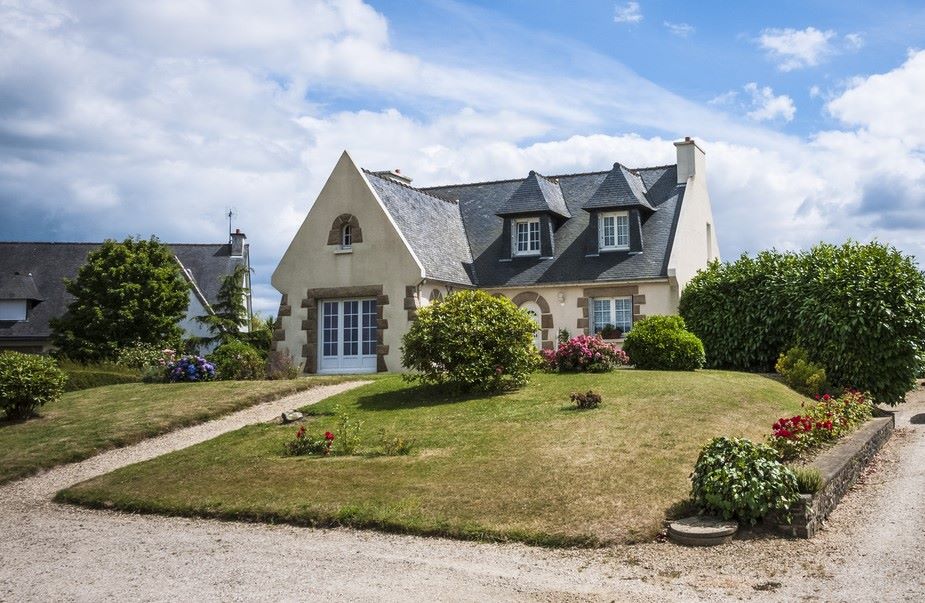
Many who are passionate about the opulent look of old-world architecture – villas, chateaus, palaces, country cottages, and castles of England, France, Italy, and Spain, are die-hard fans of European architecture.
From the intricately detailed wrought iron railings to the balconies, flower boxes, wooden shutters, traditional gas lanterns and natural stone arches, European and French Country style homes have magnificent façades suitable mainly for large plots of land.
They offer a touch of elegance and are a great reminder of history and the beautiful themes of old country architecture. There are as many subsets of European home styles as there are countries in Europe, and what these styles offer to the modern homeowner are touches of class and refined style in large proportions.
European architectural styles generally feature one or one and a half stories. The building is erected with stone and brick and finished with stucco and rich ornamental detailing. The structures are commonly large and are best erected on good-sized plots of land where their grand façades can be better appreciated. European-style homes include:
- French Country
- Tudor
- Norman
- Second Empire
- Chateauesque
Architectural Features of European Homes
European architecture (much of which was developed in Rome) has one of the most wide-ranging styles, and its characteristics include:
- Rounded and pointed arches.
- Domes.
- Vaulted ceilings.
- Flying buttresses.
- Orderly arrangements of columns with a focus on symmetry and geometry.
Tuscan Home Designs
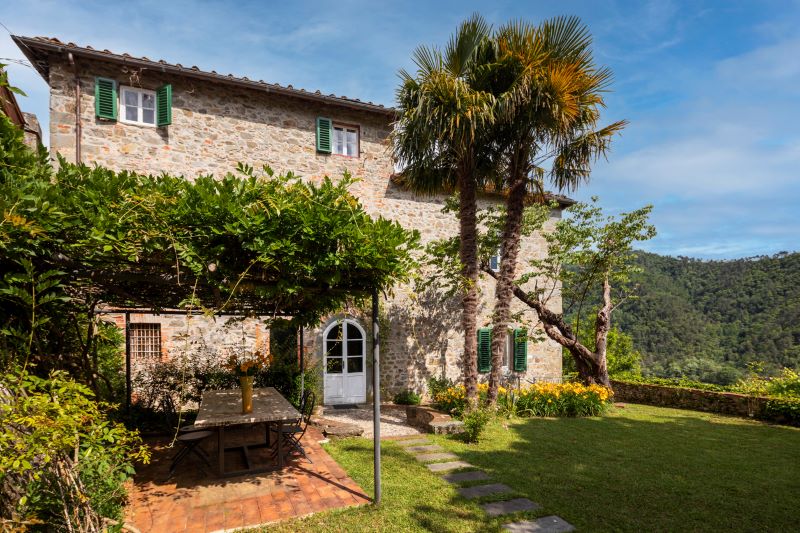
Architects and designers of Tuscan home styles and interiors draw their inspiration from the breathtaking landscapes of Tuscany, a place generally regarded as the birthplace of the Italian Renaissance.
Dotted with lush vineyards, rich olive groves, and the beautiful warm and golden colours of nature, Tuscany is home to some of the most prominent people in the history of science and arts, including artists and painters like Michelangelo, Botticelli, Galileo, Machiavelli, Leonardo da Vinci, and Francesco Petrarca.
Architectural Features of Tuscan Home Designs
Traditional Tuscan villas are impressively designed and built with the finest details. They are warm and inviting, with stylish décor inspired by textures and colours found in nature – dark green and sage, gold and yellow and various hues of brown and ochre.
Today, the buildings combine modern and classic elements and feature these classic characteristics:
- Stucco exteriors with stone accents.
- Low-inclined barrel tile roofs
- Tall, arched, and narrow shuttered windows.
- Raised entries.
- Decorative ceilings with wood beams
- Beautiful enclosed courtyards.
- Rustic but elegant look.
- Aged finishes, iron scrollwork, and intricate patterns.
- Lavish use of earth tones in interior spaces – on walls, flooring, rugs and furniture.
Similar to the designs of Mediterranean homes, Tuscan architectural designs have a unique flavour. Unlike contemporary home designs, traditional Tuscan homes (commonly) have timeless looks typically found in anything from Tuscan villas to beautiful warm farmhouses.
Mediterranean Home Designs

If you are looking for an architectural style that includes ample entertainment spaces in its design layout, Mediterranean homes are it. With its vast open and airy spaces, asymmetrical floor plans, and aesthetically pleasing outdoor entertaining spaces, the Mediterranean architectural style echoes a comfortable and tranquil outdoor lifestyle.
The design concepts developed from traditional Italian villas and elegant Spanish Revival homes – bold patterns, striking colours, simplicity, and varying textural contrasts.
Architectural Features of Mediterranean Home Designs
These luxurious house designs are popular in North America, representing the beautiful airy feel and the fresh and elegant styles of the Mediterranean region. The stylish elements include the symbolic stucco applied on the exterior walls and the open and spacious interiors that flow into each other. Other features include:
- Archway openings.
- Exposed wood beams and coffered ceilings.
- Low-pitch terracotta tiled roofs.
- Glass-panelled doors.
- Stone arches and decorative columns.
Contemporary Home Designs
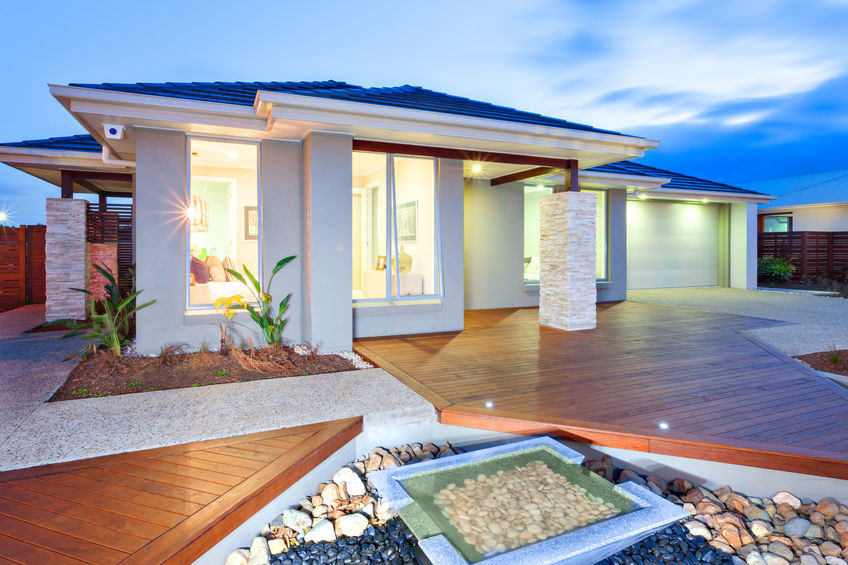
Contemporary home designs inspired by architectural styles of the early 1900s have an unparalleled stylish touch that aspiring homeowners love. From contemporary A-frame houses to geometric structures and asymmetrical designs, modern designs draw on influences – from traditional architecture to high-tech modern edifices.
The term contemporary home design covers a wide range of appealing architectural sub-styles. They are valued by individuals who want an up-to-date approach to architectural designs and their relevance to their ways of life.
Contemporary houses and their interiors generally promote flexible and functional living spaces with styles that show progressing links with the works of the early 20th-century master architects.
Architectural Features of the Early Contemporary Houses
The building components of modern architecture are mainly glass, concrete, vinyl, steel, PVC, engineered wood, and aluminium. The style leans towards lined industrial looks. For example, most contemporary residential styles emphasise the use of glass to enable an infusion of natural light to the indoors and give a great view of the outdoors.
Other architectural features of contemporary home designs include:
- Open space plans with flexible floor spaces.
- Attractive minimalist decorative elements.
- An extensive mix and a blend of modern (industrial) and traditional (wood) materials throughout the structure.
- Extensive use of glass in the form of windows, opaque or obscured glass blocks, and glazed doors that bring natural sunlight indoors.
- Unobtrusive front entrances.
This classic architectural design is perfect for the lifestyle of modernists, minimalists, the forward-thinking populace, and those who enjoy environmentally friendly (green homes) designs.
Ranch Style Architecture
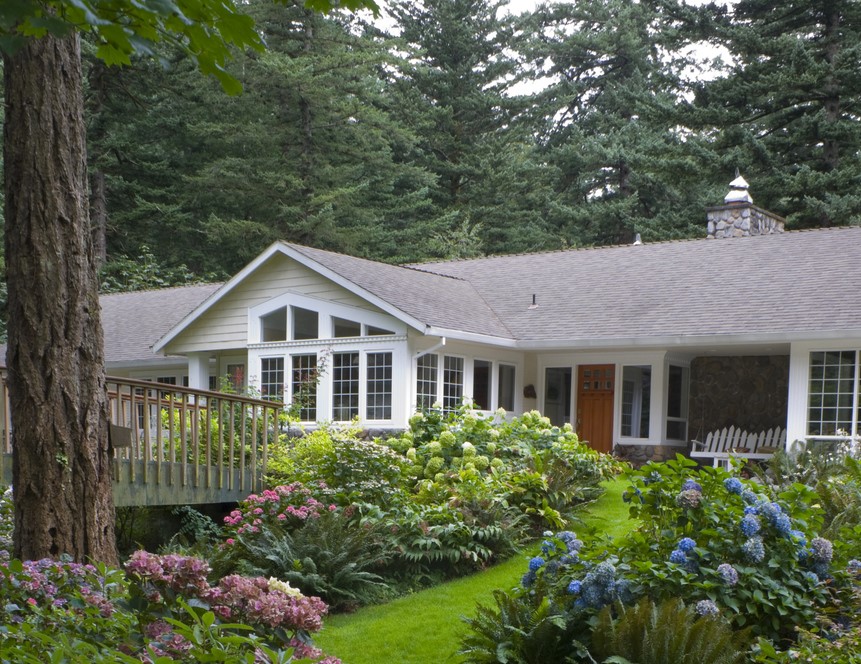
A Ranch house is typically a rectangular-shaped one-storey structure designed in L or U shapes. The early ranch homes were (apparently) built around the 1930s. They did not become popular until the 1950s when the architect Frank Lloyd Wright popularised the architectural style.
The original ranch homes were simple and informal. As they became popular and more commonly built, the design incorporated more dramatic features and became more versatile.
Features of Ranch Homes
Ranch-style houses have open spaces that flow into each other, with most rooms having a view of the front and back of the structure. While spaces are separated between living and sleeping areas, the simple interior configuration and external shape allow for easy additions to the building when more space is required. Other features include:
- Usually one-storey but can be two-storey adaptations (raised ranch) with a basement.
- Long and low-pitch roofs.
- Large windows and sliding doors with full glazing.
- Open, elongated floor plan layout.
- Minimal exterior and interior decoration.
- Cathedral or vaulted indoor ceilings.
- Rectangular, U-shaped, or L-shaped structural forms.
- Front and back views from most rooms.
- Commonly built from stone, stucco, brick, or wood.
- Cross-gabled, side-gabled, or hip roof.
- Back patios
- Overhanging eaves.
- Attached garages.
Other modern variations are raised split foyers and split-level ranch homes. For prospective homeowners (or first-time home builders) who plan to build, Ranch homes with modern adaptations are great alternatives. This is because they are cost-effective to build due to their open-plan interiors.